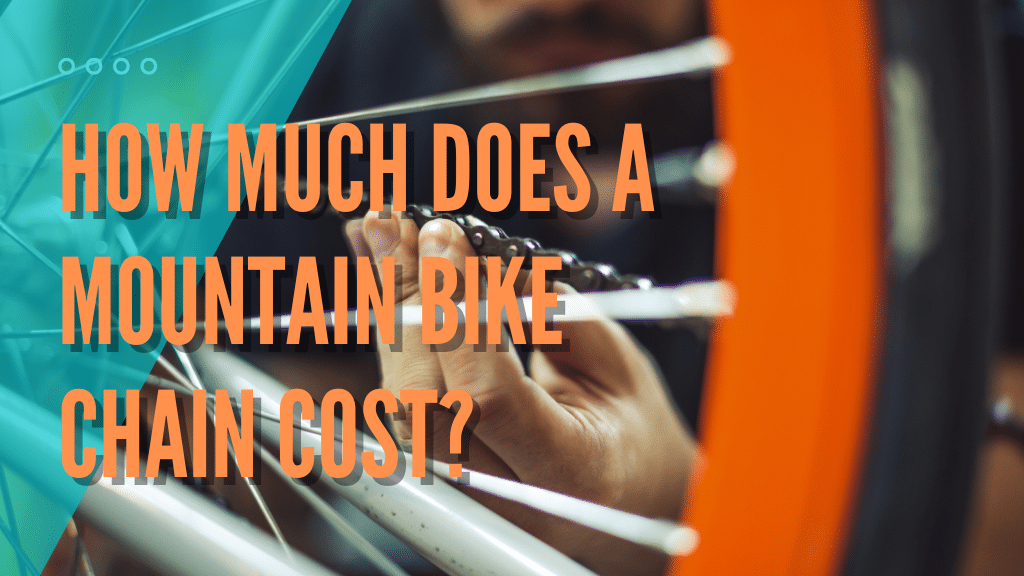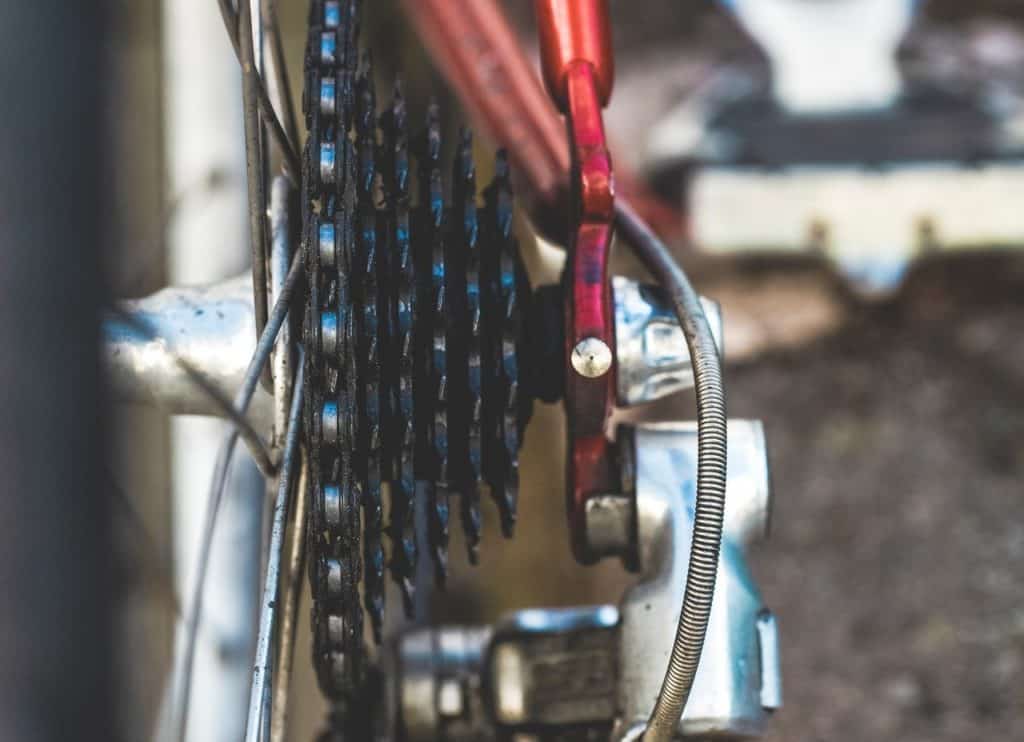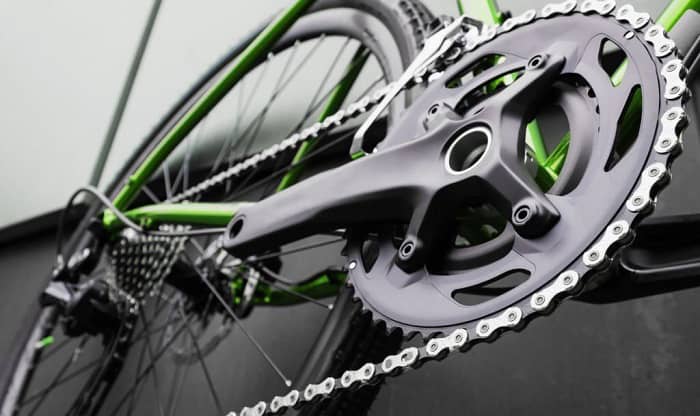Cyclists, whether casual riders or avid enthusiasts, understand the super important role of a well-maintained bike chain in making sure smooth and efficient pedaling. This super important component not only transfers power from the crankset to the rear wheel but also plays a vital part in gear shifting. However, with regular use, bike chains wear out and need replacement. This raises the question, “how much does a bike chain cost?”
Table of Contents
ToggleFactors Influencing Bike Chain Prices
The cost of a bike chain can vary significantly depending on several factors, including:
- Number of Speeds: Chains designed for bikes with a higher number of speeds, such as 11 or 12 speeds, tend to be more expensive than those for bikes with fewer speeds. This is because they have more complex construction and require more precise manufacturing.
- Chain Type: Different types of chains, such as single-speed, multi-speed, and track chains, have varying price ranges. Single-speed chains are typically the most affordable, while track chains, designed for high-performance track bikes, are generally the most expensive.
- Brand: Reputable brands like Shimano, SRAM, and KMC are known for their high-quality chains, which command higher prices compared to less established brands.
- Material: Chains made from durable materials like nickel-plated or chromium-plated steel tend to cost more than those made from standard steel.
- Features: Additional features like anti-wear coatings or quick-link connectors can increase the price of a bike chain.
Price Range of Bike Chains
Considering these factors, the cost of a bike chain can range from as low as $10 for a basic single-speed chain to as high as $300 for a high-end 12-speed chain with premium features.
Average Cost of Bike Chains
On average, a decent quality chain for a 7-speed or 8-speed bike can be purchased for around $20 to $30, while a chain for a 9-speed or 10-speed bike might cost between $25 and $50. For 11-speed and 12-speed bikes, chains typically range from $50 to $100 or more.
Maximizing Chain Longevity and Performance
Ensuring your bike chain lasts as long as possible and performs well involves understanding the key aspects of chain maintenance and usage. Here’s what you need to know:
- Regular Maintenance: Regular cleaning and lubrication of your bike chain can significantly extend its life. Dirt and grime cause increased wear and tear, so keeping your chain clean is super important.
- Proper Lubrication: The right lubricant can make a huge difference in chain performance and longevity. Dry lubricants are generally better in dry conditions, while wet lubricants are preferred in wet or muddy conditions.
- Monitoring Wear: A chain wear tool can help you measure chain wear and determine when it’s time for a replacement. Replacing your chain before it’s excessively worn can help protect other drivetrain components and save you money in the long run.
- Riding Habits: Your riding style also impacts chain wear. Aggressive riding, especially in dirty or gritty conditions, accelerates chain wear. Adjusting your riding style and route can help prolong your chain’s lifespan.
Cost-Effective Chain Replacement Strategies
Replacing a bike chain doesn’t always have to be a costly affair. There are several strategies you can employ to save money without compromising on quality:
- Bulk Purchases: If you frequently replace chains, consider buying in bulk. Some retailers offer discounts for buying multiple chains at once.
- Seasonal Sales and Discounts: Keeping an eye on sales, especially during off-seasons, can lead to significant savings. Many online and physical stores offer discounts during specific times of the year.
- Third-Party Chains: While brand-name chains are often of higher quality, third-party manufacturers can offer compatible chains at a lower cost. However, ensure that these chains are compatible with your bike’s drivetrain.
- Refurbished or Slightly Used Chains: Some retailers sell refurbished or slightly used chains at a lower price. These can be a great option if they are in good condition, though they might not last as long as a brand-new chain.
Additional Costs to Consider
Apart from the cost of the chain itself, there may be additional expenses associated with chain replacement, such as:
- Labor Costs: If you choose to have your bike chain replaced at a bike shop, labor costs can range from $10 to $20. It’s important to factor this in, especially if you’re not comfortable doing the replacement yourself.
- Chain Wear Indicator Tool: A chain wear indicator tool is a handy tool for checking chain wear and determining if replacement is necessary. These tools typically cost around $10 to $15 and are a wise investment for regular cyclists.
- Additional Tools and Accessories: Depending on your bike’s setup, you might need other tools like a chain breaker or a specific type of link connector. These tools can add to the overall cost but are super important for proper maintenance.
- Potential Drivetrain Repairs: In some cases, a worn-out chain can cause damage to other parts of the drivetrain, like the cassette and chainrings. If these components also need replacement, the costs can increase significantly.
Comparing Chain Prices Online and In-Store
In the digital age, comparing prices online before making a purchase can lead to substantial savings. Here are some tips for effective comparison:
- Check Multiple Retailers: Prices can vary widely between different online retailers and physical stores. Checking multiple sources can help you find the best deal.
- Watch for Online Deals and Coupons: Online retailers often have special deals or coupons, especially for new customers or during holiday sales.
- Consider Shipping Costs: When purchasing online, factor in shipping costs, as they can sometimes offset the savings from a lower list price.
- Read Reviews: Customer reviews can provide insights into the quality and longevity of a chain, which can be just as important as the price.
The Impact of Chain Quality on Overall Cycling Experience
While price is a significant factor, the quality of a bike chain also has a profound impact on your cycling experience. A higher-quality chain can offer:
- Smoother Shifting: Quality chains often provide smoother and more reliable shifting, which can be super important during competitive riding or challenging terrains.
- Increased Durability: A well-made chain is likely to last longer, reducing the frequency of replacements and saving money in the long run.
- Less Maintenance: High-quality chains often require less frequent cleaning and lubrication, saving time and effort.
- Better Compatibility with Bike Components: Premium chains are often designed to work seamlessly with specific types of drivetrains, enhancing overall bike performance.
Leveraging Warranties and Guarantees
Many high-quality bike chains come with warranties or satisfaction guarantees. Here’s how you can leverage these:
- Check the Warranty Terms: Understanding the warranty terms can help you know what’s covered and for how long.
- Keep Purchase Records: Keep your receipts and any other purchase records in case you need to make a warranty claim.
- Be Aware of Warranty Conditions: Some warranties might be voided if the chain is not used as intended or if it’s improperly installed.
Tips for Saving on Bike Chain Costs
To save money on bike chain costs, consider the following tips:
- Choose a chain that matches your bike’s speed and type: Overspending on a high-end chain for a casual-use bike is unnecessary. Ensure that the chain you choose is compatible with the number of gears and type of bike you have.
- Consider buying online: Online retailers often offer competitive prices and discounts on bike chains. Remember to factor in shipping costs and to purchase from reputable sources.
- Keep your chain clean and lubricated: Proper chain maintenance can prolong the lifespan of your chain, reducing the frequency of replacements. Regular cleaning and lubrication can protect the chain from premature wear.
- Learn to replace your chain yourself: If you’re mechanically inclined, you can save on labor costs by learning to replace your chain yourself. There are many online tutorials and guides that can help you with this.
- Watch for sales and discounts: Keep an eye on sales, especially during off-season periods. Bike shops and online retailers often offer discounts on bike parts, including chains.
Conclusion
The cost of a bike chain varies depending on various factors, ranging from around $10 to $300. However, with careful consideration of your bike’s needs and smart purchasing choices, you can find a high-quality chain at a reasonable price. Remember, proper chain maintenance is super important to maximize the lifespan of your chain and keep your bike running smoothly. For more cycling tips and quality bike components, visit our homepage at Refried Cycles.









